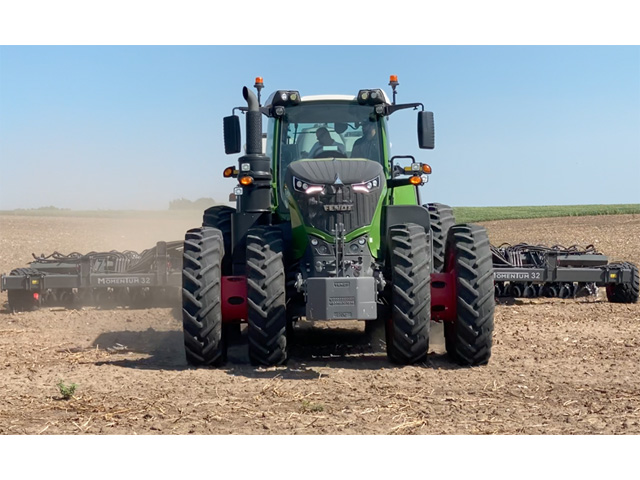Large-Tractor Market Strengthens
Tractor, Combine Sales Show Strength as Farmer Confidence Rises
Unit sales of U.S. ag equipment are showing signs of both strength and weakness. Sales of tractors 100 horsepower and below have weakened a bit during the summer. But sales of commercial farm tractors -- over 100 horsepower and large, articulated four-wheel drive tractors -- are benefiting from a stronger farm economy. This is according to a new report from the Association of Equipment Manufacturers (AEM).
"There are definitely two different markets for ag tractors and combines," explained Curt Blades, senior vice president of ag services for the Association of Equipment Manufacturers (AEM). "We've seen a little bit of softness in the under-40 horsepower market, compared with the sizable numbers from last year," Blades said. "Row-crop tractors have been performing quite well for the second quarter of 2021. We've also seen positive numbers in articulated four-wheel-drive, and even combines are showing some real signs of life in the market."
Blades said the biggest drivers of big-ticket tractor and combine sales are the higher-than-usual commodity prices and farmer confidence that those prices are going to stay where they are for a while. "At the end of 2020, we started to see some solid commodity prices," Blades said. "And that's continued on through 2021, all the way up until the second quarter."
See Blades' comment in this video: https://www.dtnpf.com/….
AGCO Corp. CEO Eric Hansotia is optimistic about the large-equipment market. "The demand is red hot as our farmers are finally making some money again," he told DTN/Progressive Farmer in a recent interview. "It's been a number of lean years in North America (and that has created) pent-up demand where farmers held back on purchases for several years. We're seeing the farmer making money now, (and) they're refreshing their fleet."
P[L1] D[0x0] M[300x250] OOP[F] ADUNIT[] T[]
In its latest monthly report, produced by AEM for July, 100-plus-horsepower tractor sales rose 37.8% over July 2020. That represents a gain of 561 units from July 2021 compared to July 2020. Four-wheel-drive tractor sales this past July rose 79.4% over July 2020, or 127 units.
Combine sales also rose, up 19.2% in July 2021 compared to July 2020, or 106 more self-propelled combines sold than a year ago.
AEM does find that the supply chain, affected by COVID-19, is restricting the available inventory of equipment across all segments. Total tractor inventory at the end of the second quarter 2021 is down more than 37% compared to the same time in 2020.
"Everyone knows about the supply-chain issues that are hitting the entire industry, whether it's buying tractors, combines, trucks or pinball machines. There is clearly some pressure in the supply chain right now," Blades said.
AGCO, for one, has worked to supply available parts to its customers. "We've oriented everything to making sure (farmers) get our attention first, that available parts go to them first," Hansotia said. "We feel really good about keeping our parts fill rate very, very high."
AGCO factories are a different story. "We're still struggling. It's probably some of the worst supply chain constraints in any of our careers. We've got several more months of challenges. Computer chips are going to be challenged all the way through (the middle) of next year," Hansotia said.
But it is more than computer chips. Tires, steel, plastics are in short supply. "Computer chips gets a lot of press because it hits automotive very hard. But, really, I would say (there are) a couple hundred elements that are challenging our system right now," Hansotia said.
The small tractor market has been affected -- for better and for worse -- by COVID-19. For example, sales of under-40-horsepower tractors in July 2020 were up 40% over the same month in 2019. This July, sales of under-40-horsepower tractors are down 4.4% over July 2020. The story is largely the same for 40- to 100-horsepower tractors, although the decline is comparatively smaller.
AEM's Blades concludes that the money that had been diverted by the pandemic from travel and other COVID-affected activities in 2020 helped produce a sharp surge in small-tractor sales. Now, with a somewhat normalized time, or at least a better understood pandemic, the small-tractor market has started to return to a more normal level of sales.
Dan Miller can be reached at dan.miller@dtn.com
Follow him on Twitter @DMillerPF
(c) Copyright 2021 DTN, LLC. All rights reserved.




